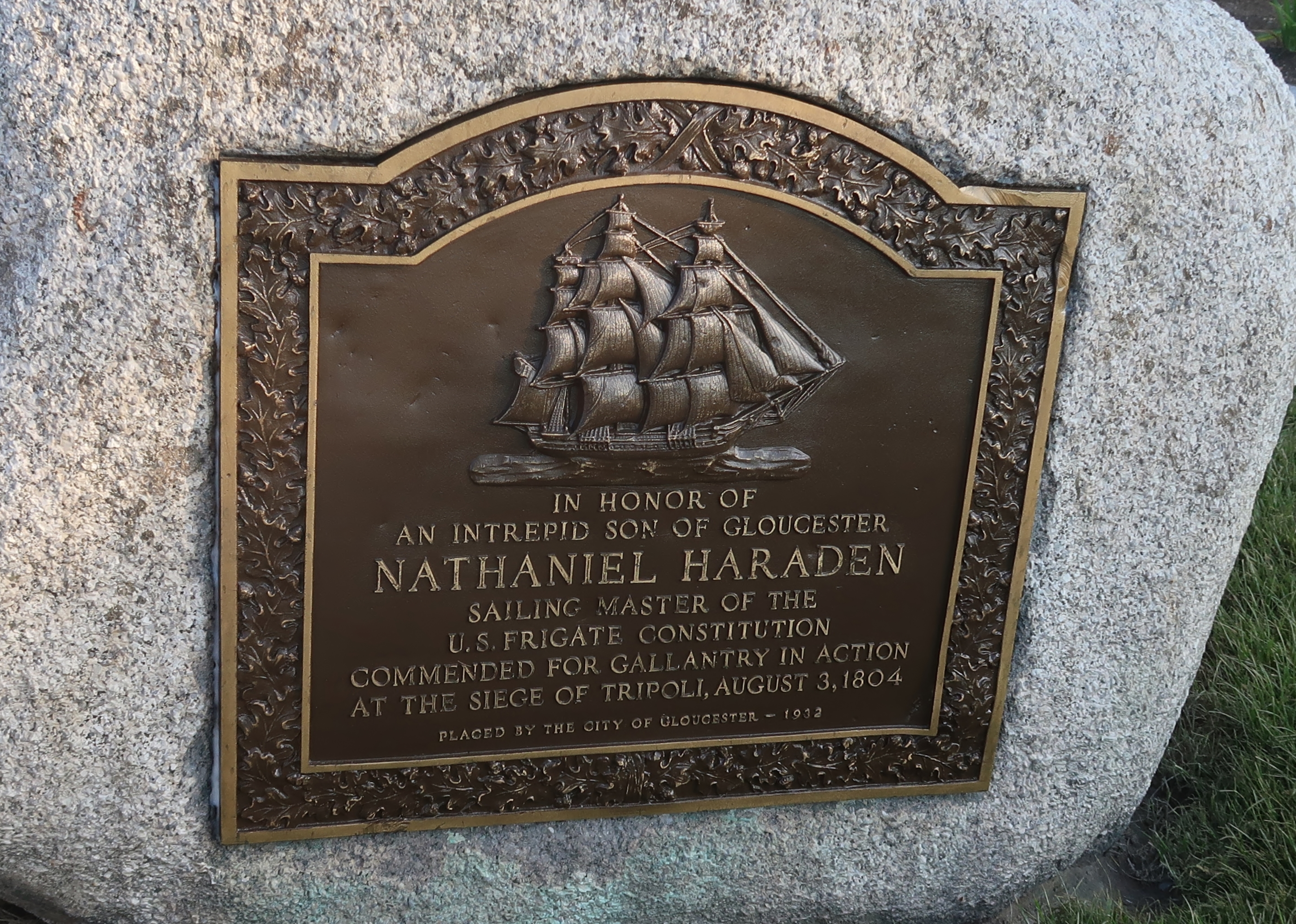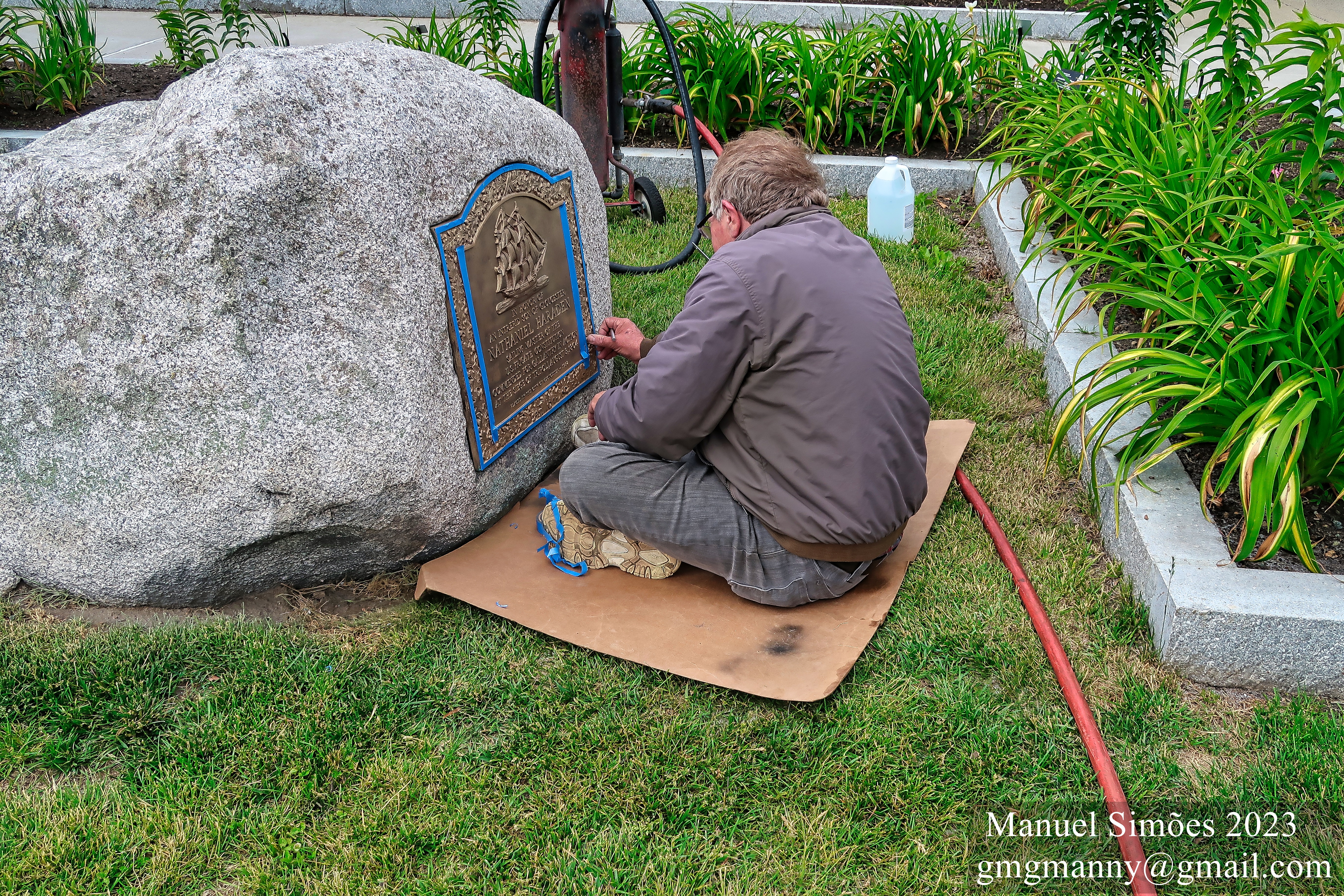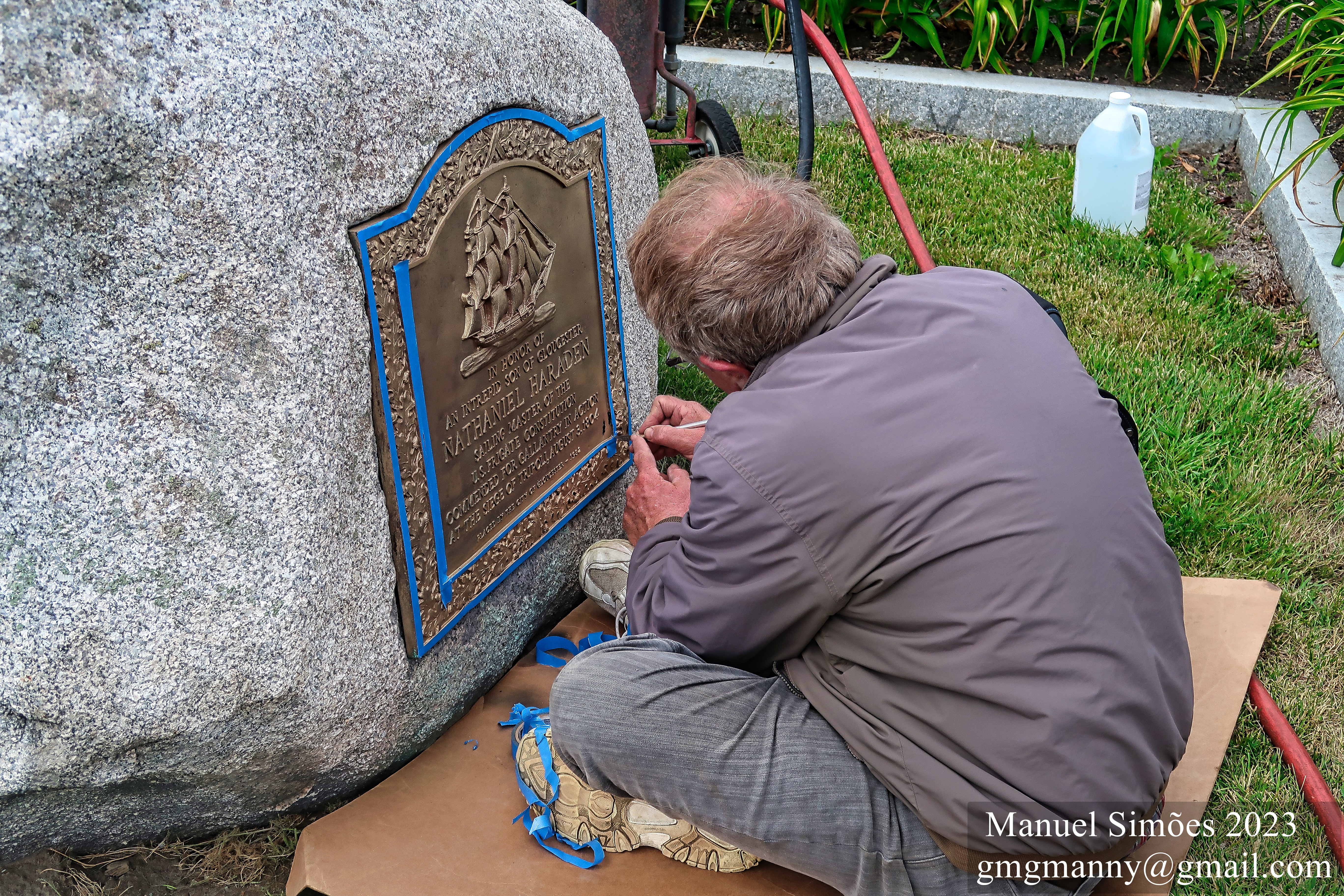


My View of Life on the Dock



Joey,
This is one of the statues that inspired my series of the last few weeks in Good Morning Gloucester. It was after I noticed this statue of Fitz Henry (Hugh) Lane and the Joan of Arc statue, that I started looking around Gloucester for more and more statues and plaques. It has been a fun and interesting search for me. The legacy of Fitz Henry Lane (1804-1865) and his wonderful paintings is such an important part of the artistic heritage of Gloucester. Just go to the Cape Ann Museum, and look at their enormous collection of these detailed, soothing seascapes. These paintings are world famous glimpses into life on and about Gloucester’s harbor and shores.
One of the things I learned about Fitz Henry Lane was that he was crippled as a child by ingesting some kind of a plant. And it was because he was unable to run around like other children his age that he became fascinated with drawing and sketching; and the thing that was nearby was Gloucester harbor, and its shipping activities. And because he had all this time to sit quietly sketching, he was able to see the play of light evolving at different times of the day; and fortunately for us, he became fascinated with the interplay of darkness and light. He was one of the school of luminous artists. Because his only formal training was with a lithograph and printing studio in Boston; he also showed the fine intricate details of many of the things that he painted. He took the painted equivalent of snapshots for us of nautical things that might not have been preserved from the workings of the Gloucester and other harbors of this day. His house where he lived as an adult, and created many of his paintings and drawings was in the center of what is now Harbor Loop. If you look at old photographs of the early 1900’s this, the western edge of Gloucester Harbor was packed with houses, warehouses and docks. All but this one granite constructed residence remains, and it was from this elevated perch that Fitz Henry Lane looked out often to the harbor. This life-like copper statue of him that is here was “Sculpted by Alfred M. Duca in 1997 “, and carved into the granite base it says, “step into my shoes and become inspired”, and next to that are a pair of copper or bronze sandals that are welded to the rock.
“I am have been a residential real estate broker for 26 years. Also, I am a novice rower down on Harbor Loop at the Gloucester Rowing Club at Maritime Gloucester. I have roots in this city that go back to 1919 when my father was born here. My grandfather worked as a scientist for John Hays Hammond at the time. Every year, as I do business in this city, and travel around Cape Ann, I find more and more interesting things that I see for the first time. I like to share some of these special places here on Good Morning Gloucester with my camera.”
Peter Dorsey
Joey,
Possibly the largest plaque in the City of Gloucester is found 20 feet high set into the side of a 60′ high by 200′ wide glacial outcropping mass of granite at Stage Fort Park. This park is where the first settlement on the Eastern Shore of what would become the Massachusetts Bay Colony was first settled in 1623. The inhabitants came from Dorchester, England (which is in the Dorset region), and were first engaged in fishing. The wide open fields were used for drying the fish. This large rock outcropping was used first by the native inhabitants as an ancient ritual area, and is the most prominent geological feature in the area.
The bronze plaque and the extraordinary granite carving that surrounds it was placed there in 1907 by the Citizens of Gloucester to commemorate an important piece of arbitration and peace-making by the soon-to-become important governing citizen, Roger Conant. The peace-making efforts by Roger Conant enabled the settlement to continue peacefully between two groups of citizens who both wished to fish for cod in those coastal waters. I have provided close up photographs of the wonderful chiseling that produced links of chain and anchor elements out of the granite face into which the plaque was fastened.
There is a historical marker sign that was erected in 1930 which re-commerates Roger Conant’s action of peace-making for the 300th anniversary of the settlement.
Peter Dorsey
Hey Joey,
Here is a World War II monument that many people might be passing by every day without knowing it. Located at the intersection of Gee Avenue and Washington Street in Riverdale are set of handsome granite steps and a monument dedicated to the residents of Riverdale who fought and died in the Second World War.
Peter Dorsey
Dear Joey,
I knew that there had to be a Civil War statue in downtown Gloucester, but I had to hunt around a little for it. Sure enough, right next to the City Hall at the corner of Dale Avenue and Warren Street is a Greek Revival obelisk, a ” large granite and bronze monument with a finely hammered base, plinth (slab base), die and cornice, surmounted by a large size statue of Liberty in bronze.” (from “History of Gloucester, James R. Pringle -1892) It was dedicated oddly enough on September 11 in 1879, a day which was observed as a general holiday in order to mark the occasion. It was the second Civil War statue erected in Gloucester. This statue, next to the City Hall, was erected by Post 45 of the Grand Army of the Republic, G.A.R., one of the many patriotic societies of the day, “In Honor of the Soldiers and Sailors’ of Gloucester, who Fought in the War of 1861 – 1865, for the Preservation of the Union”.
This is another of the beautiful statues that graces the City of Gloucester. I recommend taking the time to find and gaze upon this handsome monument.
Peter Dorsey
Peter Dorsey submits-
Joey,
Another statue that I found both artistic and interesting is located at the intersection of Prospect and Pleasant Streets. It is made of large granite blocks, and commemorates the War with Spain from 1898 to 1902, and the Gloucester men who served then, ” Gloucester Honors Her Men Who Served in the War With Spain, 1898, Volunteers All, Erected 1923″ There is a copper relief plaque commemorating the Liberation of Cuba on one side honoring, “Gloucester’s Sons, 100 Strong” and on the other side a copper relief plaque showing the U.S.S. Gloucester, and commemorating her “Sinking of the Spanish Destroyers Pluton and Furor” in July 1898, and the 300 men from Gloucester who “Volunteered for Naval Service”.
If you have never looked closely at these beautiful relief plaques, I recommend that you park you car nearby, and walk carefully around the traffic; and spend a little time gazing at this beautiful commemorative artwork.